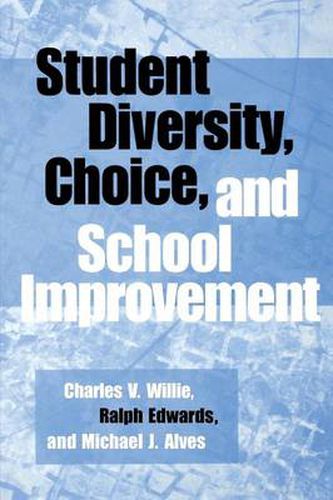Readings Newsletter
Become a Readings Member to make your shopping experience even easier.
Sign in or sign up for free!
You’re not far away from qualifying for FREE standard shipping within Australia
You’ve qualified for FREE standard shipping within Australia
The cart is loading…






Diversified schools, in which students of various racial, ethnic, and socioeconomic characteristics are balanced, have a positive contextual effect on achievement for all groups compared to schools with homogeneous student bodies that tend to help affluent, white students and harm poor students and students of color. The authors advise school districts convicted for operating segregated schools on how to make all schools schools of choice that must compete for students who enroll in them. And it discusses ways of being fair and just in the distribution of educational resources to affluent as well as poor students and to white students as well as students of color.
School systems that are reluctant to use racial fairness guidelines in the enrollment process are advised to use socioeconomic fairness guidelines, because the absence of any enrollment fairness guidelines tends to result in the return to segregation and a dual school system helpful to a few but harmful to many students. This book suggests ways of empowering parents and professional educators and it discusses how to achieve a good outcome for urban as well as rural school districts and for large as well as small school systems. Among communities mentioned in this study are Cambridge, Boston, Brockton MA; St.Lucie County, Lee County, Hillsborough County (including Tampa) FL; Santa Rosa County CA; Seattle WA; New Haven CT; Rockford IL; Milwaukee WI; and Charleston County SC.
$9.00 standard shipping within Australia
FREE standard shipping within Australia for orders over $100.00
Express & International shipping calculated at checkout
Diversified schools, in which students of various racial, ethnic, and socioeconomic characteristics are balanced, have a positive contextual effect on achievement for all groups compared to schools with homogeneous student bodies that tend to help affluent, white students and harm poor students and students of color. The authors advise school districts convicted for operating segregated schools on how to make all schools schools of choice that must compete for students who enroll in them. And it discusses ways of being fair and just in the distribution of educational resources to affluent as well as poor students and to white students as well as students of color.
School systems that are reluctant to use racial fairness guidelines in the enrollment process are advised to use socioeconomic fairness guidelines, because the absence of any enrollment fairness guidelines tends to result in the return to segregation and a dual school system helpful to a few but harmful to many students. This book suggests ways of empowering parents and professional educators and it discusses how to achieve a good outcome for urban as well as rural school districts and for large as well as small school systems. Among communities mentioned in this study are Cambridge, Boston, Brockton MA; St.Lucie County, Lee County, Hillsborough County (including Tampa) FL; Santa Rosa County CA; Seattle WA; New Haven CT; Rockford IL; Milwaukee WI; and Charleston County SC.